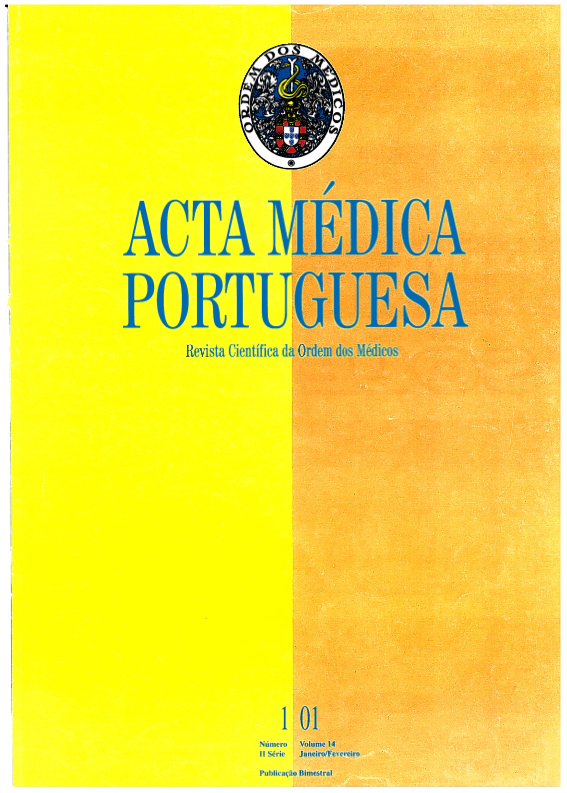Ressonância Magnética fetal.
DOI:
https://doi.org/10.20344/amp.1813Resumo
The increasing use of magnetic resonance imaging (MRI) in fetal evaluation is due to its excellent structural and morphological resolution. We report nine fetal MRI examinations and discuss some of the technical issues related to this technique.We report nine fetal MRI done in the MRI Center in Caselas, Portugal, between January 1999 and March 2000. The fetal ages ranged from 24 and 33 weeks of gestation.The MRI diagnoses were: one normal case, two normal variants, two hydrocephalus due to intraventricular hemorrhage, one corpus callosum agenesis, one corpus callosum hypoplasia, one case with white matter encephaloclastic lesions and one case of torcular and superior sagittal sinus dilatation. In one case the MRI confirmed the ultrasonography (US) diagnosis, in two cases the MRI depicted the etiology of the pathologies found with US, in three cases there was a suspicion of pathology with US but the MRI was normal or had normal variants, and in three cases the MRI diagnoses were different from those made by US.MRI has the highest sensitivity for fetal imaging and should be used if the US is insufficient to establish the diagnosis.Downloads
Downloads
Como Citar
Edição
Secção
Licença
Todos os artigos publicados na AMP são de acesso aberto e cumprem os requisitos das agências de financiamento ou instituições académicas. Relativamente à utilização por terceiros a AMP rege-se pelos termos da licença Creative Commons ‘Atribuição – Uso Não-Comercial – (CC-BY-NC)’.
É da responsabilidade do autor obter permissão para reproduzir figuras, tabelas, etc., de outras publicações. Após a aceitação de um artigo, os autores serão convidados a preencher uma “Declaração de Responsabilidade Autoral e Partilha de Direitos de Autor “(http://www.actamedicaportuguesa.com/info/AMP-NormasPublicacao.pdf) e a “Declaração de Potenciais Conflitos de Interesse” (http://www.icmje.org/conflicts-of-interest) do ICMJE. Será enviado um e-mail ao autor correspondente, confirmando a receção do manuscrito.
Após a publicação, os autores ficam autorizados a disponibilizar os seus artigos em repositórios das suas instituições de origem, desde que mencionem sempre onde foram publicados e de acordo com a licença Creative Commons









